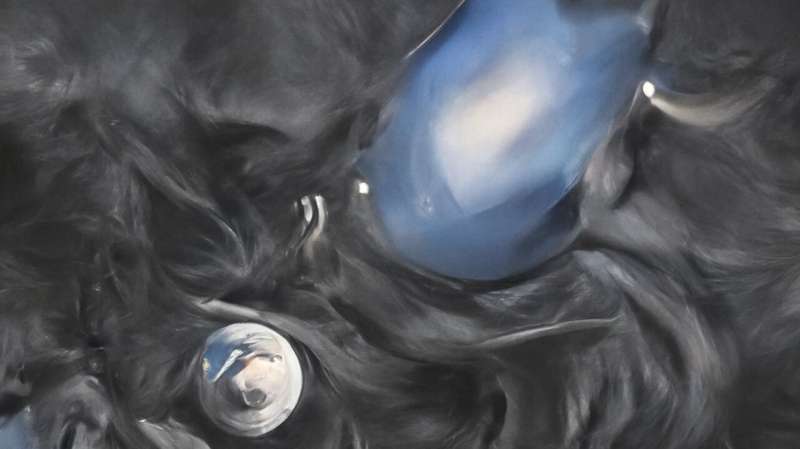Discovery of Early Universe Galaxy Resembling the Milky Way

November 9, 2023
This article has been evaluated in accordance with the editorial standards and guidelines of Science X. The content's authenticity is verified through the following procedures by the editors:
- fact-checked
- publication has undergone peer-review
- sourced from a trusted origin
- proofread
by Iqbal Pittalwala, University of California - Riverside
With assistance from the James Webb Space Telescope, a global collective of scientists, inclusive of astronomer Alexander de la Vega from the University of California, Riverside, has uncovered the most remote barred spiral galaxy reminiscent of the Milky Way ever recorded.
Until recently, it was understood that barred spiral galaxies such as the Milky Way could not have been observed prior to the universe, estimated to be 13.8 billion years old, reaching half its present age.
The study, released this week in Nature, was spearheaded by researchers from the Centro de Astrobiología in Spain.
'Ceers-2112, the newly discovered galaxy, was formed shortly after the Big Bang,' stated de la Vega, co-author and postdoctoral researcher in the Department of Physics and Astronomy. 'The discovery of ceers-2112 indicates that galaxies in the early universe could have structures as organized as the Milky Way, which is unexpected given that early universe galaxies were predominantly chaotic, and very few bore semblance to the Milky Way.'
De la Vega remarked that ceers-2112 has a central bar, which is a construction of stars within galaxies. Bars, which mirror bars found in everyday life, such as a candy bar, can occasionally be found in non-spiral galaxies, though it is a rarity.
'Nearly all bars are situated in spiral galaxies,' de la Vega confirmed, who joined UCR after earning his doctorate in astronomy at Johns Hopkins University. 'The bar in ceers-2112 intimates that galaxies became stable and ordered more rapidly than we previously hypothesized, suggesting that our theories of galaxy formation and evolution may require reconsideration.'
The prevailing knowledge of galaxy evolution postulated that it took billions of years for galaxies to reach sufficient order to form bars.
'However, the discovery of ceers-2112 indicates that this can occur in a fraction of that time- approximately one billion years or less,' de la Vega elaborated. According to him, galaxy bars are considered to form in spiral galaxies with rotationally ordered stars, similar to the Milky Way.
'In these galaxies, bars can spontaneously form due to instabilities in the spiral structure or from the gravitational impact of a neighboring galaxy,' said de la Vega. 'In the past, as the universe was in its infancy, galaxies were unstable and chaotic, leading to the belief that bars could not form or endure within early universe galaxies.'
The unearthing of ceers-2112 is anticipated to modify at least two aspects of astronomy.
'Firstly, theoretical frameworks for galaxy creation and evolution will have to accommodate the notion of certain galaxies stabilizing to the point of being able to host bars at an early stage in the history of the universe,' de la Vega proposed. 'Adjustments may have to be made to these models regarding the quantity of dark matter comprising early universe galaxies, as this is thought to impact the rate of bar formation. Secondly, ceers-2112's discovery proves that bar-like structures can be detected when the universe was in its youth. This is pertinent, as galaxies were smaller in the distant past than they are presently, which complicates finding bars.'
Dr. de la Vega contributed to the research team by gauging the redshift and attributes of ceers-2112, and also helped interpret the measurements.
'Redshift is an observable characteristic of a galaxy that signifies its distance and the period of time the galaxy is seen, attributable to the finite speed of light,' he explained.
What startled de la Vega the most was how precisely the bar properties of ceers-2112 could be determined.
'Initially, I suspected that finding and assessing the properties of bars in galaxies like ceers-2112 would be laden with measurement uncertainties,' he shared. 'But the prowess of the James Webb Space Telescope, combined with the proficiency of our research team, enabled us to firmly determine the size and shape of the bar.'Periodical information: Nature
Supplied by University of California - Riverside




